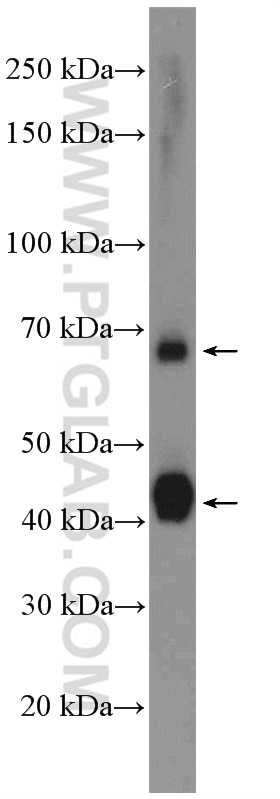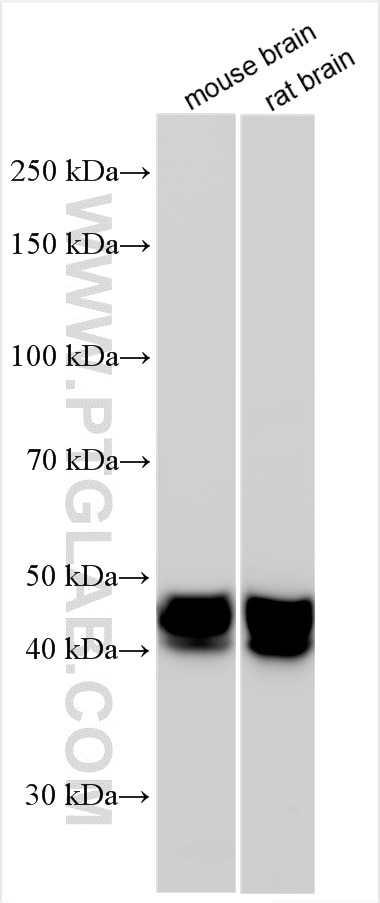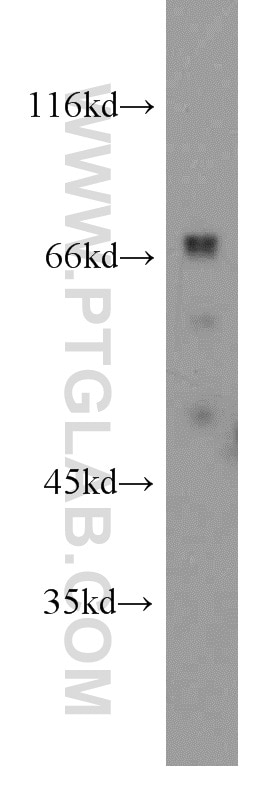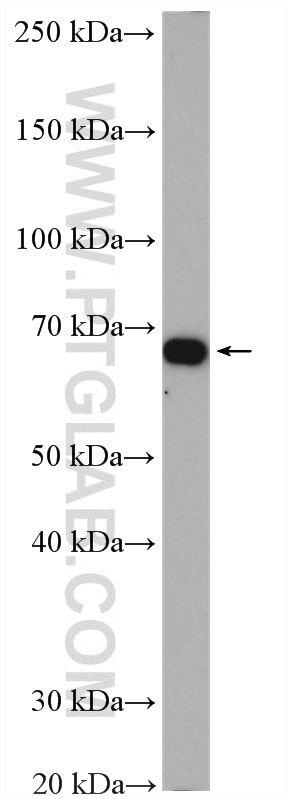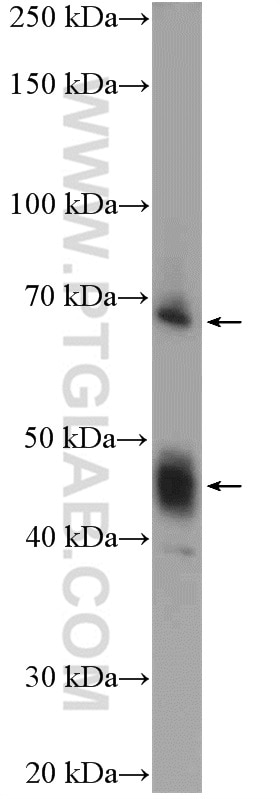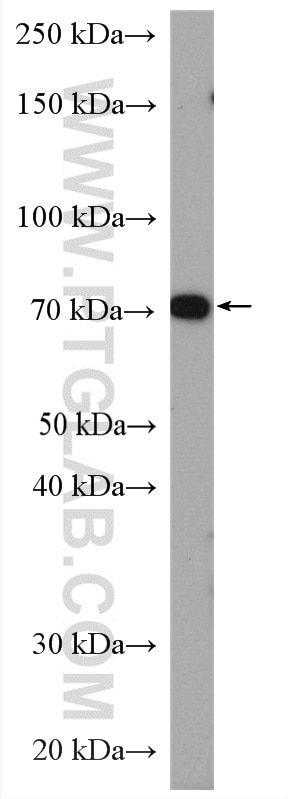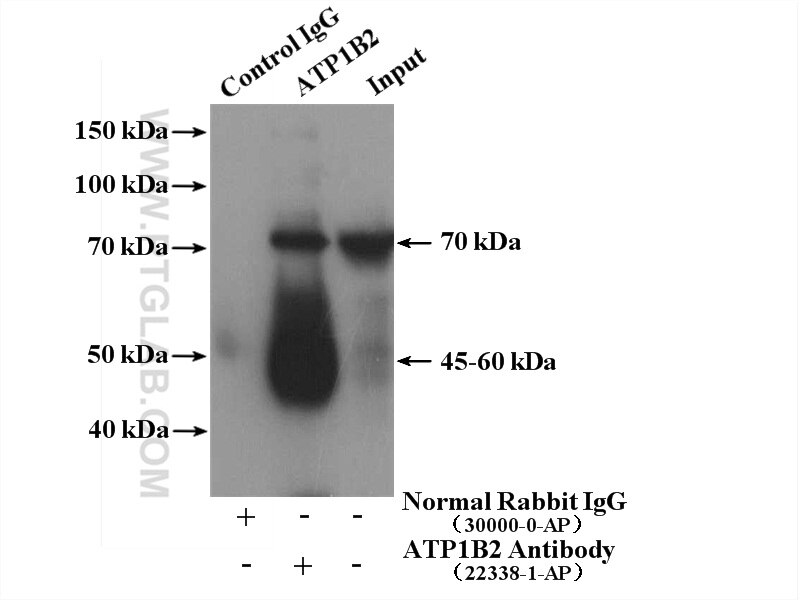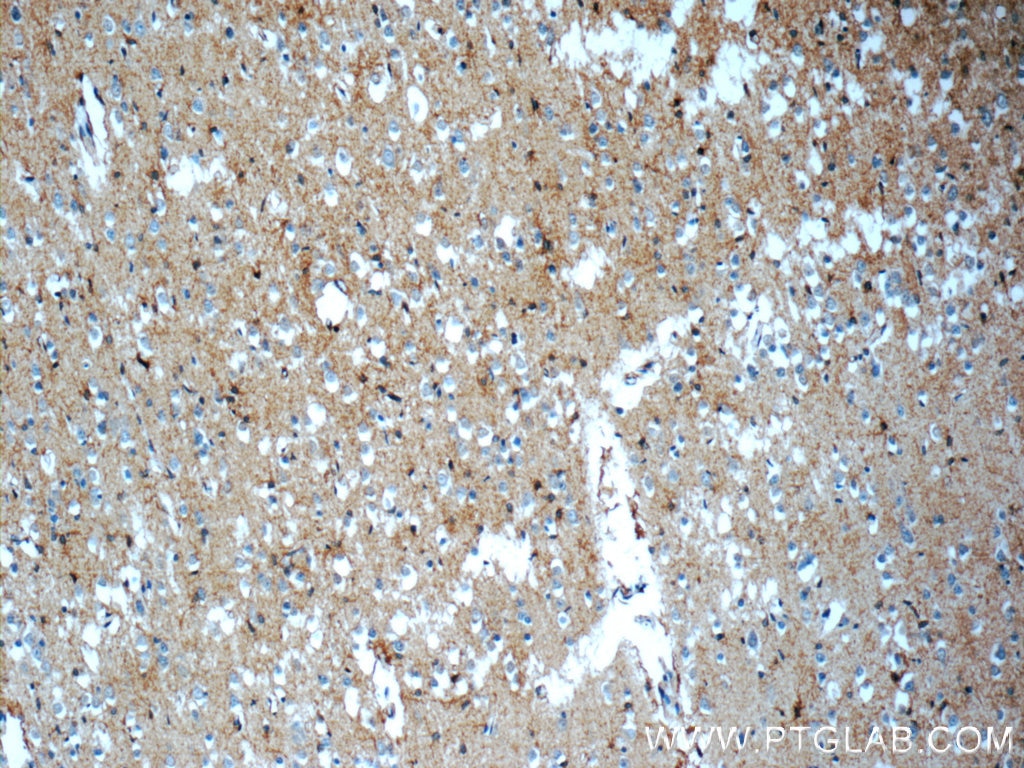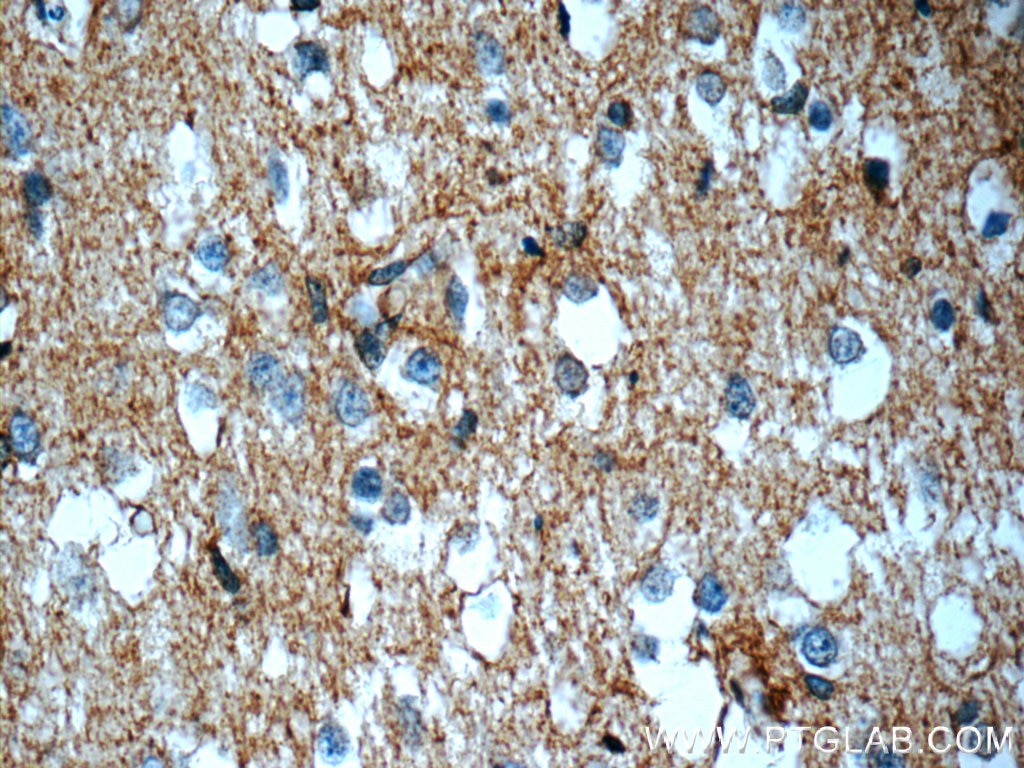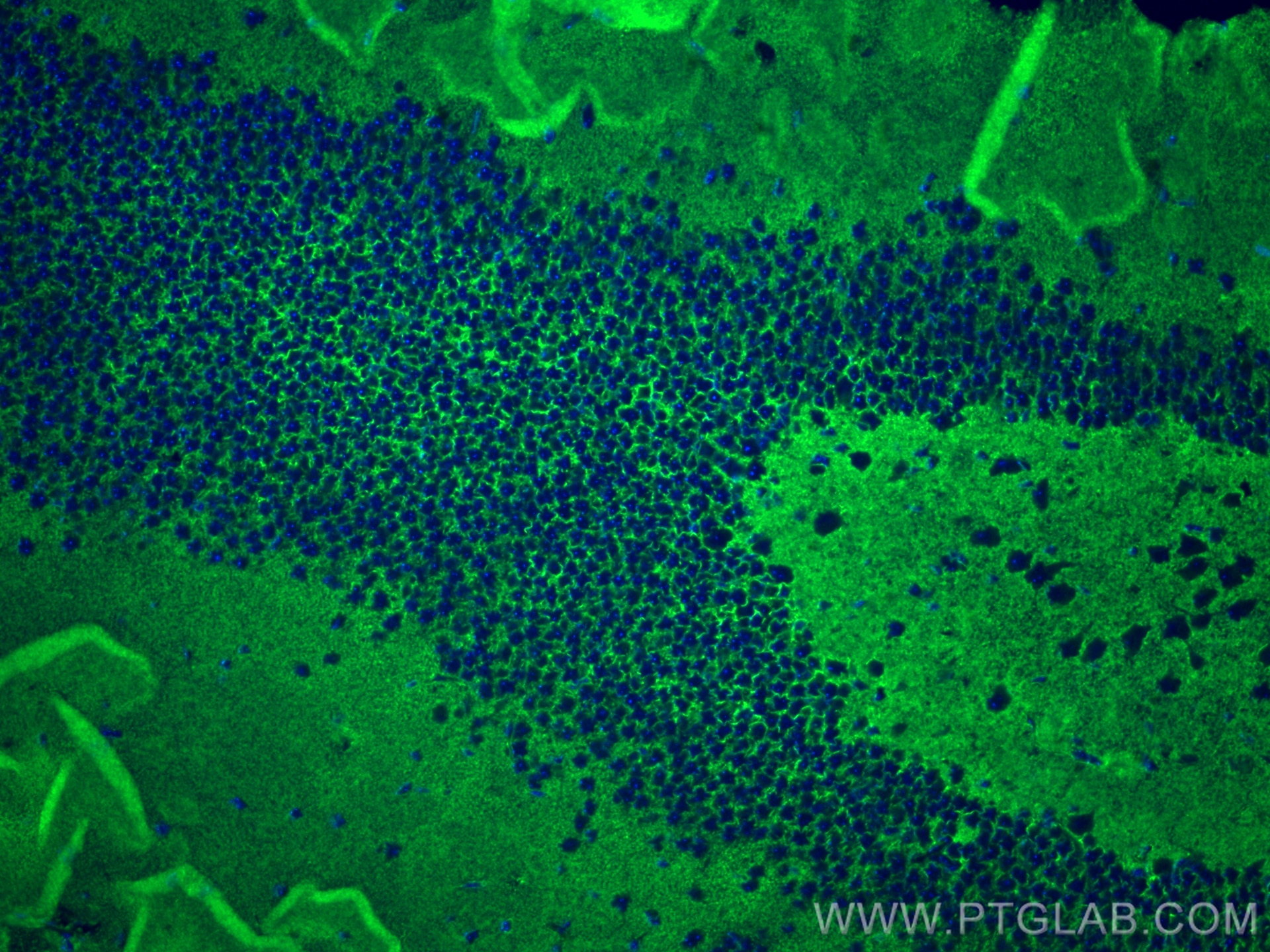Anticorps Polyclonal de lapin anti-ATP1B2
ATP1B2 Polyclonal Antibody for WB, IHC, IF-P, IP, ELISA
Hôte / Isotype
Lapin / IgG
Réactivité testée
Humain, rat, souris
Applications
WB, IHC, IF-P, IP, ELISA
Conjugaison
Non conjugué
N° de cat : 22338-1-AP
Synonymes
Galerie de données de validation
Applications testées
| Résultats positifs en WB | tissu cérébral de souris, cellules C2C12, cellules C6, tissu de muscle squelettique de souris |
| Résultats positifs en IP | tissu de muscle squelettique de souris |
| Résultats positifs en IHC | tissu cérébral humain il est suggéré de démasquer l'antigène avec un tampon de TE buffer pH 9.0; (*) À défaut, 'le démasquage de l'antigène peut être 'effectué avec un tampon citrate pH 6,0. |
| Résultats positifs en IF-P | tissu cérébral de souris, |
Dilution recommandée
| Application | Dilution |
|---|---|
| Western Blot (WB) | WB : 1:5000-1:50000 |
| Immunoprécipitation (IP) | IP : 0.5-4.0 ug for 1.0-3.0 mg of total protein lysate |
| Immunohistochimie (IHC) | IHC : 1:20-1:200 |
| Immunofluorescence (IF)-P | IF-P : 1:50-1:500 |
| It is recommended that this reagent should be titrated in each testing system to obtain optimal results. | |
| Sample-dependent, check data in validation data gallery | |
Applications publiées
| WB | See 10 publications below |
| IF | See 2 publications below |
Informations sur le produit
22338-1-AP cible ATP1B2 dans les applications de WB, IHC, IF-P, IP, ELISA et montre une réactivité avec des échantillons Humain, rat, souris
| Réactivité | Humain, rat, souris |
| Réactivité citée | rat, Humain, souris |
| Hôte / Isotype | Lapin / IgG |
| Clonalité | Polyclonal |
| Type | Anticorps |
| Immunogène | ATP1B2 Protéine recombinante Ag17818 |
| Nom complet | ATPase, Na+/K+ transporting, beta 2 polypeptide |
| Masse moléculaire calculée | 290 aa, 33 kDa |
| Poids moléculaire observé | 45-65 kDa |
| Numéro d’acquisition GenBank | BC126175 |
| Symbole du gène | ATP1B2 |
| Identification du gène (NCBI) | 482 |
| Conjugaison | Non conjugué |
| Forme | Liquide |
| Méthode de purification | Purification par affinité contre l'antigène |
| Tampon de stockage | PBS with 0.02% sodium azide and 50% glycerol |
| Conditions de stockage | Stocker à -20°C. Stable pendant un an après l'expédition. L'aliquotage n'est pas nécessaire pour le stockage à -20oC Les 20ul contiennent 0,1% de BSA. |
Informations générales
ATP1B2 is the β2 subunit of Na+/K+-ATPase which is an essential membrane-bound enzyme responsible for the transport of Na+ and K+ in most eukaryotic cells. ATP1B2 is also called the adhesion molecule on glia (AMOG) and it is highly expressed in normal glia. It is a heavily glycosylated protein that plays a role in cellular adhesion in the CNS. Recently differential expression of ATP1B2 has been found in some glioneuronal tumors (PMID: 23887941, 19371356). This antibody recognizes the endogenous ATP1B2 protein in human brain. The bands between 45 kDa and 65 kDa represent the glycosylated forms of ATP1B2 in different levels (PMID: 8918259).
Protocole
| Product Specific Protocols | |
|---|---|
| WB protocol for ATP1B2 antibody 22338-1-AP | Download protocol |
| IHC protocol for ATP1B2 antibody 22338-1-AP | Download protocol |
| IF protocol for ATP1B2 antibody 22338-1-AP | Download protocol |
| IP protocol for ATP1B2 antibody 22338-1-AP | Download protocol |
| Standard Protocols | |
|---|---|
| Click here to view our Standard Protocols |
Publications
| Species | Application | Title |
|---|---|---|
Cell Mol Gastroenterol Hepatol Self-renewing Monolayer of Primary Colonic or Rectal Epithelial Cells. | ||
Redox Biol Caveolin 1-related autophagy initiated by aldosterone-induced oxidation promotes liver sinusoidal endothelial cells defenestration. | ||
Cancer Cell Int Spider venom components decrease glioblastoma cell migration and invasion through RhoA-ROCK and Na+/K+-ATPase β2: potential molecular entities to treat invasive brain cancer. | ||
World J Biol Psychiatry Altered expression levels of miR-144-3p and ATP1B2 are associated with schizophrenia. | ||
Eur J Appl Physiol Resistance training upregulates skeletal muscle Na+, K+-ATPase content, with elevations in both α1 and α2, but not β isoforms. | ||
Neurosci Lett Effects of icariin on alleviating schizophrenia-like symptoms by regulating the miR-144-3p/ATP1B2/mTOR signalling pathway |
